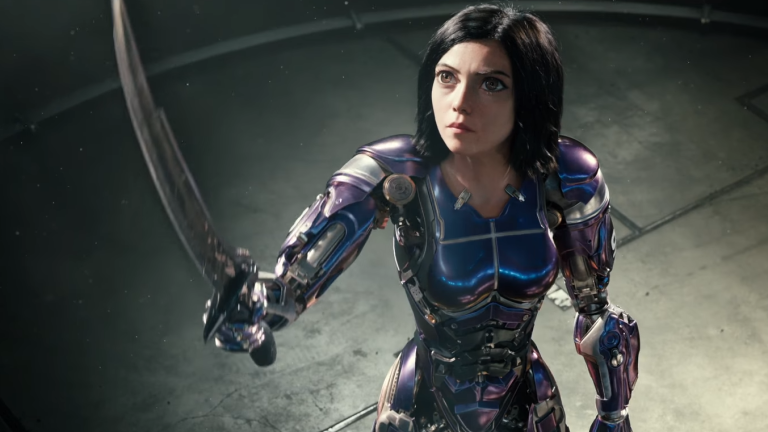Alita: Battle Angel Ending Explained
We dig into the ending of Robert Rodriguez and James Cameron’s innovative sci-fi spectacle and where Alita is headed next!

James Cameron has been fighting for decadesto bring his ambitious vision of a Battle Angel Alita to life. The project has transformed through the years and while some believed that it would never actually come to fruition, with the help of Robert Rodriguez, Alita: Battle Angel is now an eye-popping reality. It’s an absolute delight to get thrown into the year 2563 and navigate through the devastated Iron City via Alita’s fresh eyes, but between the class systems, the order of the Hunter-Warrior cyborg assassins, and the rules of Motorball, there’s a lot to get lost in. Hence we’ll break down here the seismic events of Alita: Battle Angel’s ending and what’s next for the cyborg.
Much of Alita: Battle Angel focuses on Alita (Rosa Salazar) coming to terms with and understanding her very existence. In a junkyard, cyborg scientist Dyson Ido (Christoph Waltz) finds the husk of Alita’s cyborg body and brings her back to life. Ido becomes a surrogate father figure for Alita and as she lives her life, she falls in love with a boy named Hugo (Keean Johnson), slowly recalls memories of her past, and further gains humanity.
Alita finds herself in combat with a Hunter-Warrior assassin, Grewishka (Jackie Earle Haley) who overwhelms her and destroys her body in combat. This leads to Ido apprehensively installing Alita in the powerful, but dangerous, Berserker body. Alita uses her new strength to excel in Motorball, Iron City’s murder-iffic sanctioned sport, but she doesn’t realize that Vector (Mahershala Ali) is pulling the strings and has turned the game into a convenient means to eliminate her.
The film’s tailend pulls the rug out from under the audience and reveals that Desty Nova is actually the film’s major antagonist. Nova is a powerful scientist from Zalem who’s been the major puppet master through all of Alita’s trial and tribulations. He’s also able to transfer his consciousness into other bodies, which allows him to temporarily threaten Alita through Vector and Grewishka’s bodies. Alita eventually loses Hugo (twice) and vows revenge on Nova. Nova is a major presence in the original Battle Angel Alita text, although he doesn’t appear until much later. The decision to include Nova at all clearly shows that Alita: Battle Angel is already looking at the bigger picture with the story that they’re telling.
Alita: Battle Angel depicts the full story of Alita’s “awakening,” her discovery of her humanity and mission, and her plight through Iron City, but it does in many ways feel like a setup for Alita’s showdown with Nova and her mission to ascend from Iron City and reach Zalem (which she now has two reasons to accomplish, since it was also Hugo’s dying wish). This feeling would be less egregious if Nova just didn’t appear, but his inclusion is a fun addition for fans, as it provides the audience with something more and a direction for the next film; it also teases a much larger role for Nova’s super-secret guest star (Edward Norton, in what’s a very Kingdom of Heaven kind of last-minute cameo). That being said, it’s also an incredibly risky gamble because if Alita: Battle Angel flops and there is no sequel, all of this postulating about the future becomes a waste of time that could have better fleshed out the film’s core story.
It’s still too early to tell if Rodriguez, Cameron, and company will get the opportunity to continue the Alita: Battle Angel saga and venture to Zalem, but clearly they are not done with this universe. This film establishes and humanizes Alita, but now she’s ready to fight back and seize her destiny. The question is are we done with her and her world?
